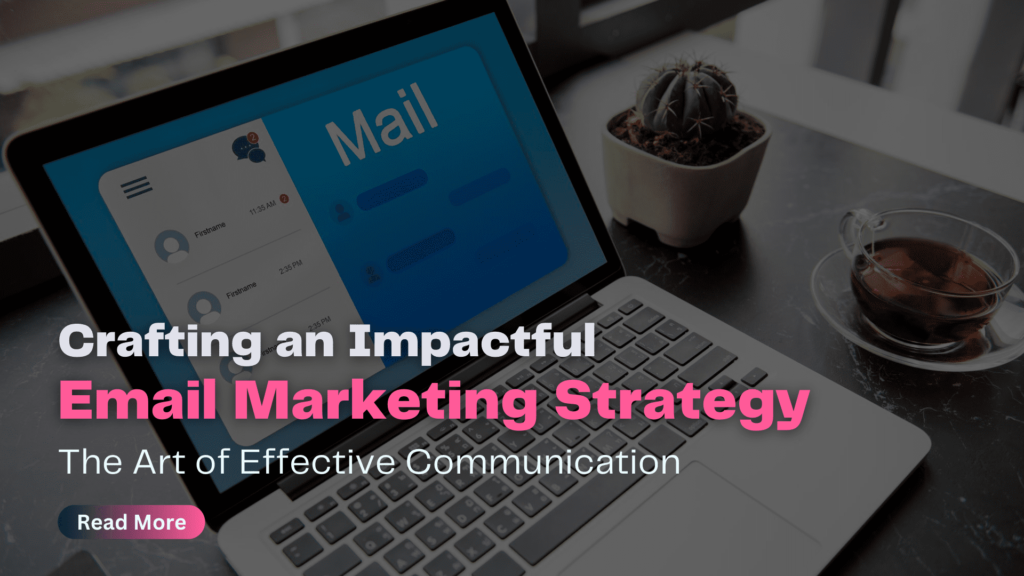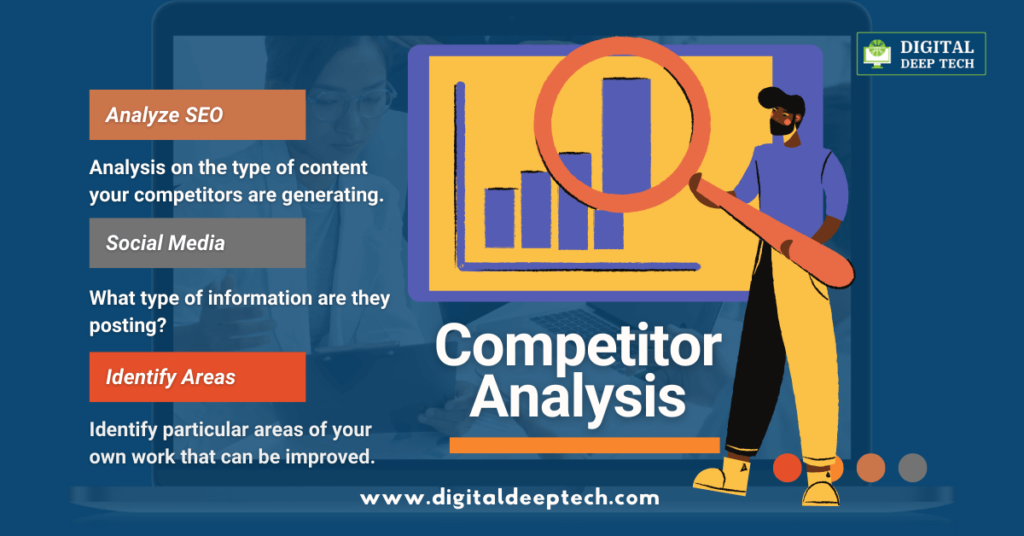Email marketing is a form of direct marketing that uses electronic mail as a means of communicating commercial or fundraising messages to an audience. Email marketing continues to be a powerful tool for businesses of all sizes. In 2023, there are several trends that businesses can leverage to boost engagement with their email campaigns.
Some trending email strategies in 2023 include:
Email Marketing Personalization Techniques
Using data and insights to create highly customized and targeted email campaigns. Personalized emails have been shown to increase open and click-through rates. In 2023, businesses should take this a step further by using data such as purchase history and browsing behavior to create highly targeted and personalized email campaigns.
There are several email personalization techniques that can be helpful for an email marketing strategy:
Personalized subject lines
: Personalizing the subject line of an email can increase the open rate by up to 50%. Personalizing the subject line of an email can be done by including the recipient’s name or other unique information in the subject line. For example, instead of using a generic subject line like “Meeting Schedule,” you could use “Meeting Schedule for [Recipient’s Name].” This helps to grab the recipient’s attention and make the email more relevant to them. Additionally, you can also personalize the subject line by including context or other relevant information that you know the recipient is interested in.
Segmentation:
Segmenting an email list for an email marketing campaign involves dividing the list into smaller groups based on specific criteria. This can include factors such as demographics, purchase history, website behavior, and engagement with previous campaigns. Once the list is segmented, tailored messaging and offers can be sent to each group, increasing the relevance and effectiveness of the campaign. To segment an email list, you can use tools such as a CRM system or email marketing software that allows you to segment your list based on certain criteria. You can also use data you’ve collected to manually segment your list by sorting and grouping contacts based on the criteria you’ve defined.
Dynamic content:
Using dynamic content in emails can help tailor the message to the individual recipient’s interests and needs. One way to use dynamic content in email marketing is to segment your email list based on specific criteria such as demographics, past purchase history, or behavior on your website. Then, use that information to create personalized and targeted email campaigns for each segment. For example, you can use dynamic content to show different products or offers to different segments of your email list. Another way to use dynamic content is to use merge tags to personalize the subject line, greeting, and body of the email with the recipient’s name or other information. Additionally, you can use dynamic images, countdown timers, and other interactive elements to make the email more engaging and increase the chances of conversion.
Personalized recommendations
Sending personalized product or content recommendations based on a customer’s browsing or purchase history can increase conversion rates. Personalized recommendations can help improve the effectiveness of email marketing by tailoring the content of the email to the interests and behavior of the individual recipient. This can lead to higher open and click-through rates, as well as increased engagement and conversions. Personalized recommendations can also help to improve the overall customer experience by providing relevant and useful information to the recipient. Additionally, personalized email can help to increase customer loyalty and retention.
Create Sales-Driven Triggered Email Campaigns
Setting up automated, triggered emails based on customer behavior (such as abandoning a shopping cart) can help re-engage customers and boost conversions.
Triggered emails are automated messages that are sent based on a specific action or event that a subscriber takes, such as signing up for a newsletter or abandoning a shopping cart. They can be highly effective in email marketing because they are timely and relevant to the subscriber’s interests or behavior.
For example, a triggered welcome email sent to a new subscriber can introduce the brand and set expectations for future communications, while a cart abandonment email can encourage the subscriber to complete a purchase. Triggered emails can also be used to re-engage inactive subscribers or to upsell or cross-sell products or services.
Triggered emails typically have higher open and click-through rates than regular newsletters or promotional emails, as they are perceived as more relevant and valuable to the subscriber. They can also help to improve the overall effectiveness of an email marketing campaign by targeting specific segments of subscribers and personalizing communications.
Write Interactive Content for Email Marketing
Incorporating interactive elements, such as quizzes and polls, to increase engagement and encourage conversions. Using HTML5 and CSS3 to create interactive email campaigns that offer a more engaging experience for subscribers. Interactive content such as quizzes, polls, and surveys can help increase engagement with your emails. This type of content encourages recipients to interact with your emails, making them more likely to remember your brand and take action.
To write interactive content for email marketing, consider using the following techniques:
- Use questions or polls to encourage engagement and gather feedback from your audience.
- Include calls to action, such as “click here” or “register now,” to encourage recipients to take a specific action. Calls to action (CTAs) are important in email marketing because they provide clear instructions for the recipient on what they should do next, such as visiting a website, making a purchase, or signing up for a service.
- Use images and videos to make your content more visually appealing and engaging.
- Personalize your emails by addressing the recipient by name and tailoring the content to their interests.
- Use interactive elements such as countdown timers, quizzes and games to make the email more engaging.
- Make sure the email is optimized for all devices, including mobile.
- Use A/B testing to determine which elements of your interactive email are most effective.
- Track and analyze the performance of your interactive emails to determine what is working and what isn’t and make adjustments accordingly.
- By following these tips, you can create interactive email content that will help you build stronger relationships with your audience and drive more conversions.
Email Marketing Automation
Using automation tools to trigger personalized emails based on subscriber behavior and actions. Automation tools can be helpful in email marketing campaigns by streamlining and simplifying certain tasks, such as sending targeted and personalized emails, tracking and analyzing data on email performance, and managing and segmenting email lists. This can lead to more efficient and effective campaigns, as well as higher engagement and conversion rates. Additionally, automation tools can automate repetitive tasks such as sending birthday emails, win-back campaigns and other time-sensitive messages. These tools can also trigger automated actions based on specific subscriber actions or behaviors, such as sending a follow-up email after a purchase or a abandoned cart email.
Mobile-responsive Design
Optimizing email design for mobile devices to improve readability and increase click-through rates. With more and more people accessing their email on their mobile devices, it’s important to ensure that your emails are optimized for mobile. This includes using a responsive design and keeping the subject line and preheader text concise.
To make a mobile-responsive design for an email marketing strategy, you can follow these steps:
- Use a responsive email template: Many email marketing platforms, such as Mailchimp and Campaign Monitor, offer a variety of mobile-responsive templates that automatically adjust to the size of the recipient’s screen. A responsive email template is an email design that automatically adapts to the device and screen size on which it is being viewed. There are many pre-designed responsive email templates available online that you can use, or you can create your own using HTML and CSS.
- Customize the template: Customize the template to match your brand and the message you want to convey in the email. Make sure to include a clear call-to-action and any other important information.
- Test the template: Before sending out the email, test the template on different devices and email clients to ensure that it looks and functions correctly.
- Send the email: Once you have ensured that the template is working correctly, send the email to your target audience.
- Track the results: Track the performance of the email and use the data to improve future campaigns.
Keep in mind that Responsive email design also includes using a single-column layout, using large fonts, and using HTML and CSS to control the layout of the email. This will make your email look great on any device and screen size, and increase the chances that the recipient will engage with your email.
Use a Single-column Layout for Email Marketing
A single-column layout is easier to read on small screens and eliminates the need for horizontal scrolling. A single-column layout can be helpful in email marketing because it simplifies the design and makes the email more easily readable on mobile devices. With a single-column layout, the email’s content is stacked vertically, making it easy to scroll through on a small screen. Additionally, a single-column layout allows for larger text and more whitespace, which can improve readability. This layout also helps to keep the call-to-action (CTA) button above the fold, making it more likely that the recipient will see it and interact with it.
Here are a few tips for keeping an email simple for email marketing:
- Keep the subject line short and to the point.
- Use a clear and easy-to-read layout.
- Use simple, clear language that is easy to understand.
- Limit the use of images and graphics, as they can slow down the loading time of the email.
- Use a clear call-to-action (CTA) that tells the recipient what you want them to do next.
- Test your email on different devices and email clients to ensure it looks good and is easy to read.
- Have a clear goal for your email, whether it be to drive sales or boost engagement.
- Avoid using too many links or buttons in the body of the email.
It’s important to remember that the goal of email marketing is to engage your audience, not overwhelm them. By keeping your emails simple and easy to read, you’ll be more likely to get the results you want.
Use Large Fonts for Email Marketing
Make sure the text is large enough to be easily readable on a small screen. In email marketing, the font size is typically set using HTML or CSS. In HTML, the font size can be set using the “size” attribute within the “font” tag. For example, to set the font size to 12 pixels, you would use the following code: Text goes here.
In CSS, the font size can be set using the “font-size” property. This property can be applied to specific HTML elements using a class or ID selector, or it can be applied to the entire document using the “body” selector.
It’s important to keep in mind that the font size should be easy to read on both desktop and mobile devices, and that different email clients may display font sizes differently. So it’s always good to test the email on different clients and devices.
Test your Emails on Multiple Devices
Before sending out your email campaign, test it on multiple devices and email clients to ensure it looks and functions as expected. Email testing can help identify and resolve technical issues with the email template, such as broken links or display issues on different email clients. It can also help ensure that the subject line and content of the email are effective in catching the recipient’s attention and encouraging them to take action. Additionally, testing can help identify any potential spam triggers that could cause the email to be filtered or blocked. Overall, email testing can help improve the deliverability and effectiveness of the email marketing campaign.
By following these steps, you can create a mobile-responsive design for your email marketing strategy that will make it easy for recipients to read and interact with your emails on any device.
- Compress the images: Use image compression tools to reduce the file size without significantly impacting the quality of the image.
- Resize the images: Make sure the images are no larger than they need to be. For example, if you’re using a 600×600 image in an email that’s only 300×300, you’re adding unnecessary bytes.
- Use the appropriate file format: JPEG is a good choice for photographs, while PNG is better for graphics with text or transparent backgrounds.
- Use alt tags: Use alt tags to describe the images for the visually impaired, and for the images that do not load for some reason.
- Use a CDN: Use a Content Delivery Network (CDN) to host your images and include the image links in your emails. This can help reduce the load time of the images and improve email deliverability.
Always test your emails before sending them to a large audience to make sure that the images are loading properly and that the email is rendering correctly in various email clients.
Embedding Video in Email Marketing Campaigns
Using embedded video in email campaigns to improve engagement and increase conversions. Video content is becoming increasingly popular in email marketing. In 2023, businesses should consider adding video to their emails to increase engagement and drive conversions.
Video content can be helpful for an email marketing strategy in several ways. First, it can increase engagement and click-through rates by making emails more visually interesting and interactive. Second, it can be used to demonstrate products or services, providing a more in-depth understanding of what is being offered. Third, video can also be used to build trust and establish a personal connection with subscribers by allowing them to see the faces and hear the voices of the people behind a brand. It can be embedded in the email or linked to a landing page. Additionally, video can help with the lead generation by providing a call-to-action after watching it.
Choose the Best AI Techniques for Email Marketing
Utilizing AI technology to optimize email campaigns and increase ROI. Artificial intelligence (AI) is becoming more widely used in email marketing. AI can be used to optimize subject lines, send time, and content for maximum engagement. In 2023, businesses should look into using AI-powered tools to improve the performance of their email campaigns.
Use of Emoji and GIFs
It can be used to add personality and a human touch to emails and improve engagement. Emoji and GIFs can be helpful in email marketing by adding visual interest to the message and making it more engaging for the recipient. Emoji can be used to convey emotions or express a concept in a concise way, while GIFs can be used to add movement and energy to the message. Both can also be used to break up text and make the email more visually appealing. Additionally, they can also help to increase open and click-through rates, as they can help to make the email stand out in a crowded inbox.
By leveraging these trends, businesses can improve the performance of their email campaigns and drive more conversions in 2023.
How to build email marketing strategy with LinkedIn Sales Navigator?
- Start by identifying your target audience and creating buyer personas. Use LinkedIn Sales Navigator to search for individuals and companies that match your ideal customer profile.
- Use the advanced search filters in Sales Navigator to find prospects that fit your specific criteria, such as job title, company size, industry, and location.
- Build a targeted list of prospects by saving your search results and adding leads to your account.
- Use the InMail feature in Sales Navigator to reach out to your prospects and introduce yourself and your company. Make sure to personalize your message and provide value in your communication.
- Use LinkedIn’s analytics to track the effectiveness of your campaigns, measure engagement, and track conversions.
- Continuously refine and optimize your strategy based on data and feedback. Test different subject lines, messaging, and offers to see what resonates with your audience.
- Build relationships with your leads and customers by providing valuable content, staying active on LinkedIn, and engaging in conversations.
- Create follow-up email campaigns to nurture leads, and use lead scoring to prioritize follow-up with the most promising prospects.
Some popular email marketing tools include:
- Mailchimp
- Constant Contact
- Campaign Monitor
- GetResponse
- AWeber
- Drip
- ConvertKit
- ActiveCampaign
- Klaviyo
- MailerLite
It’s worth noting that the best email marketing tool for a business will depend on the specific needs and goals of that business.
AI tools and features can improve email marketing performance in a variety of ways.
- Predictive modeling: AI can be used to predict customer behavior and preferences, which can be used to create more effective email campaigns.
- Optimization: AI can be used to optimize email campaigns by analyzing data and making adjustments to improve performance.
- Content generation: AI can be used to generate personalized email content that is tailored to individual recipients.
- Email Testing: AI can be used to test subject lines, content, and design, allowing you to optimize your emails for better engagement and conversion rates.
- Email Scoring: AI can be used to score your emails in terms of relevance and interest, allowing you to prioritize your emails to be sent to the most likely recipients.
In conclusion, AI has greatly improved the efficiency and effectiveness of email marketing. It has enabled companies to personalize their campaigns, automate certain aspects of the process, and analyze data to optimize their campaigns. By using AI, companies can improve their ROI, increase customer engagement and satisfaction, and stay ahead of the competition.
Are you looking for an email marketing expert to help you get the most out of your digital marketing campaigns? Look no further than Digital Deep Tech. Our team of experienced professionals have the knowledge and expertise to ensure that your campaigns are successful. With their help, you can create effective emails that will increase customer engagement and boost conversions. We understand the importance of staying up-to-date with the latest email marketing techniques and trends, so our experts are always ready to provide you with the best advice and support. Hire an email marketing expert today and see how they can help your business reach its goals!


















































